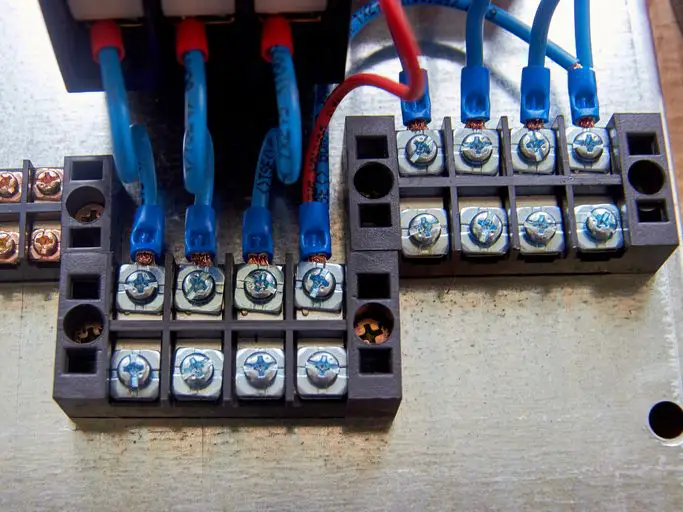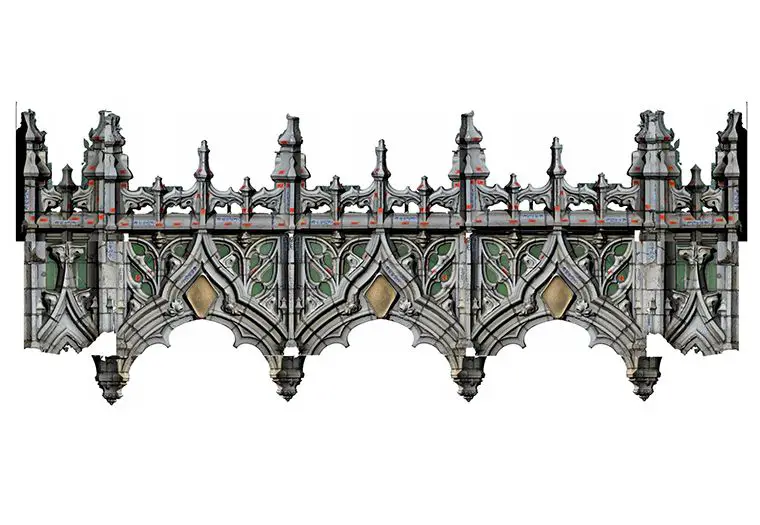Are Terminal Blocks Safe?
Terminal blocks are an essential part of electrical and electronic systems and are widely used to connect two or more conductors or wires. They provide disconnection and reconnection access points in the circuit and aid in installation, maintenance, troubleshooting, and replacement of components (CUI Devices).
Terminal blocks allow secure and orderly connections through screw, clamp, or spring connectors in an electrical enclosure. They come in a wide range of sizes, types, ratings and configurations for different applications and cable sizes. Common uses of terminal blocks include signal distribution, power supply regulation, device interconnects and modular wiring of control systems (C3 Controls).
While terminal blocks simplify connections and wiring, their improper selection, installation or maintenance can pose serious electrical, mechanical and fire hazards. Questions remain about the safety of certain terminal block types, configurations, materials and quality. This article examines the key risks and considerations when working with terminal blocks.
Electrical Hazards
Terminal blocks carry significant electrical hazards that can lead to serious injury or even death if proper precautions are not taken. The three main electrical hazards associated with terminal blocks are risk of shock, arc flash, and overheating.
Electric shock occurs when a person becomes part of the electric circuit and current flows through their body. According to electrical injury statistics, there are around 400 deaths and 4,000 injuries per year in the US caused by electrical hazards. Shock can lead to severe burns or even cardiac arrest.
Arc flashes are explosive bursts of energy triggered by faults in electrical equipment. The intense heat and blast from an arc flash can cause severe burns. Arc flashes are a leading cause of injury for electrical workers according to industry safety statistics. Proper PPE and safe working practices are essential to mitigate risk.
Overheating occurs when too much current passes through the terminal block or wire sizes are inadequate. Excess heat can melt insulation, ignite fires, or damage equipment. Overheating over time also accelerates deterioration of the blocks. Proper sizing of wires and terminals is crucial.
In summary, terminal blocks must be selected, installed, and maintained properly to minimize electrical hazards. Shock, arc flash, and overheating risks can be reduced through safety training, procedures, PPE, and design factors. However, inherent dangers remain when working with terminal blocks in electrical systems.
Mechanical Hazards
Terminal blocks can present some mechanical hazards that need to be considered. Two key issues are sharp edges and pinch points.
The edges and corners of terminal blocks, especially metal ones, can be sharp. Installing and working with terminal blocks often requires pressing on the edges and corners, which can result in cuts and scrapes if not carefully handled. Wearing gloves is recommended when working with terminal blocks.
Pinch points also need to be avoided when connecting wires to terminal blocks. When screwing wires down into the terminals, fingers can get caught between the wire and terminal, resulting in pinched fingers. Proper procedures should be followed, such as keeping fingers clear of pinch points when tightening down terminals [1].
Overall, being cognizant of sharp edges and pinch hazards, and taking appropriate precautions like wearing gloves and following safe installation procedures, can help minimize the risk of mechanical damage when working with terminal blocks.
Materials
Terminal blocks are typically made from materials like polyamide, polycarbonate, or polypropylene plastic which have high resistance to heat, chemicals, and weathering. This makes them suitable for use in demanding electrical applications.
According to Phoenix Contact’s material tests, terminal blocks undergo rigorous testing for mechanical, thermal, chemical, and electrical properties to ensure they are safe for long-term use. Tests include impact resistance, resistance to stresses under heat and cold, resistance to chemicals like oils and solvents, and flammability ratings. [1]
Weidmüller also performs extensive material testing on their Klippon Connect terminal blocks to guarantee they meet international safety standards. This includes testing for flammability, chemical resistance, weathering properties, and dielectric strength. The advanced polymer materials ensure low flammability and toxicity risks. [2]
Connections
Proper connections are crucial for terminal block safety. Loose wires or improper torque when tightening can lead to arcing, overheating, and fire hazards. According to Understanding Terminal Blocks for Safe Connections, wires should be tightened to the manufacturer’s recommended torque specifications, usually between 4-12 inch-pounds. Over-tightening can damage the terminal block or wire, while under-tightening can result in loose connections. Wires should be trimmed properly and fully inserted into the terminal block. Stranded wires may require ferrules to ensure all strands make solid contact inside the terminal. All connections should be visually inspected and tug-tested. Loose connections are a leading cause of terminal block failures that can result in equipment damage or injury.
Insulation
One of the key safety features of terminal blocks is the insulation surrounding the conductive parts. This insulation prevents short circuits and electrical shock hazards. However, over time and with use, this insulation can become degraded or damaged.
Signs of problematic insulation include cracks, cuts, burns, or discoloration. If the insulation is compromised, the conductive parts inside the terminal block may become exposed. This creates a major shock hazard for anyone handling the terminals. Exposed conductors also increase the chances of short circuits developing between adjacent terminals or to external metal surfaces of an enclosure.[1]
Regular inspection and testing is crucial to identify any insulation issues before they escalate. Damaged insulation often requires replacing the terminal block. Proper installation and maintenance practices by electricians will help preserve the insulation integrity over the lifetime of the equipment.

[1] https://www.phoenixcontact.com/en-us/quality-tests/quality-tests-for-terminal-blocks/electrical-tests-terminal-blocks
Enclosures
Terminal blocks are often mounted inside protective electrical enclosures to prevent environmental hazards from damaging the connections. Common enclosure ratings used for terminal blocks include NEMA 3R, 4X, and 12. These ratings specify levels of protection against solid objects, liquids, and corrosion.
NEMA 3R enclosures provide protection against rainfall and sleet but allow limited liquid ingress. NEMA 4X enclosures are watertight and resist corrosion. NEMA 12 enclosures protect against dust, dirt, and dripping liquids.
Higher NEMA ratings typically increase the cost but ensure greater protection for terminal block connections in demanding environments. The specific enclosure rating should be selected based on the application’s requirements for ingress protection and accessibility.
Maintaining the integrity of the protective enclosure is critical. Regular inspection and replacement of aged seals and gaskets helps prevent moisture and contaminants from reaching terminal block connections.
Maintenance
Proper maintenance and inspection of terminal blocks is critical for safety. Regular inspections should check for signs of wear, corrosion, overheating, or loose connections (Source). Terminal blocks and wiring should be cleaned periodically to prevent buildup of dust, grease, or other contaminants which can lead to issues. Testing the integrity of connections with a multimeter can identify problems before they lead to failures.
Routine testing includes checking for loose connections by gently tugging on wires to verify they are securely installed. Using a thermographic camera can identify hot spots and trouble areas. Dielectric withstand testing between phases and ground can catch insulation breakdowns. Proper torque levels should be maintained on terminal screws according to manufacturer specifications (Source). Damaged, overheated, or corroded terminals should be replaced. Following routine inspection and testing procedures is essential for safe, reliable operation.
Alternatives
While terminal blocks have been a standard in electrical wiring for decades, safer alternatives are available. Two options to consider are spring clamp connectors and push-in connectors. Spring clamp connectors use a spring mechanism to lock wires into place without screws, reducing the risk of loose connections. Push-in connectors allow wires to be inserted by hand without tools. Both options reduce the need to work with live wires during installation and maintenance, improving safety.
Insulation displacement connectors (IDCs) are another alternative, commonly used in telecommunications and computer networking. IDCs pierce insulation and make contact directly with copper wiring when a wire is pressed into the connector. This reduces the risk of loose wiring compared to screw terminals. While not suitable for high-power applications, IDCs can improve safety in low-voltage wiring.
When selecting alternatives to terminal blocks, considerations include temperature rating, current load, vibration resistance, and ease of installation. While terminal blocks remain common, safer connection methods should be evaluated for critical electrical systems.
Conclusion
Overall, terminal blocks can be very safe if designed, installed, and maintained properly. Here are some key tips to ensure safety:
- Choose terminal blocks rated for the appropriate voltage and current
- Make sure blocks have proper spacing and barriers between connections
- Use the recommended wire size, stripping length, and tightening torque
- Keep connections clean and tighten periodically
- Inspect for damage, corrosion, overheating
- Replace damaged blocks immediately
- Use enclosures rated for the environment
- Follow all electrical codes and manufacturer guidelines
With thoughtful product selection, careful installation, and regular maintenance, terminal blocks can provide safe, reliable electrical connections for many years. The responsibility falls on engineers, electricians, and maintenance personnel to properly implement terminal block systems. While no wiring method is completely risk-free, following best practices with terminal blocks minimizes hazards.




